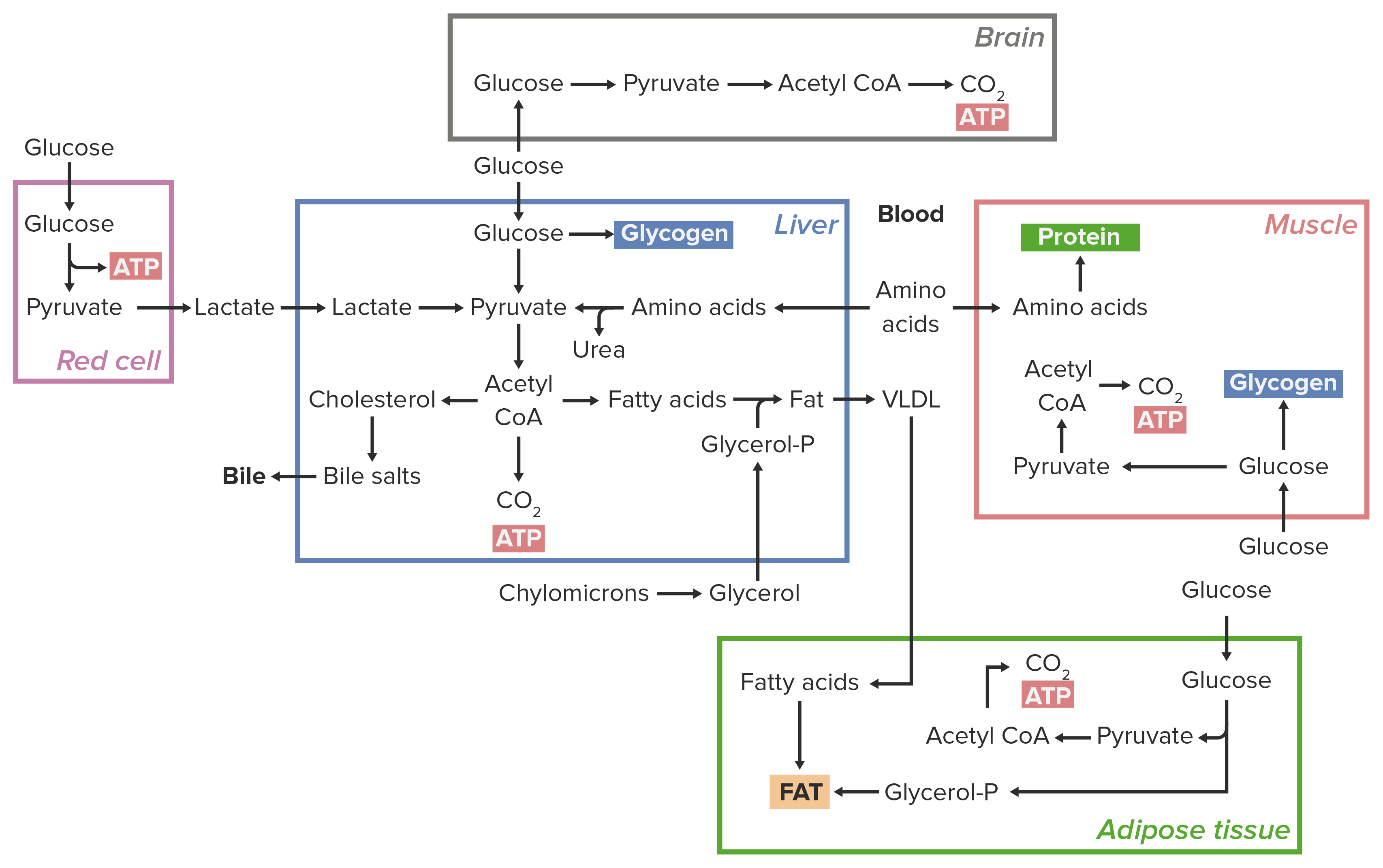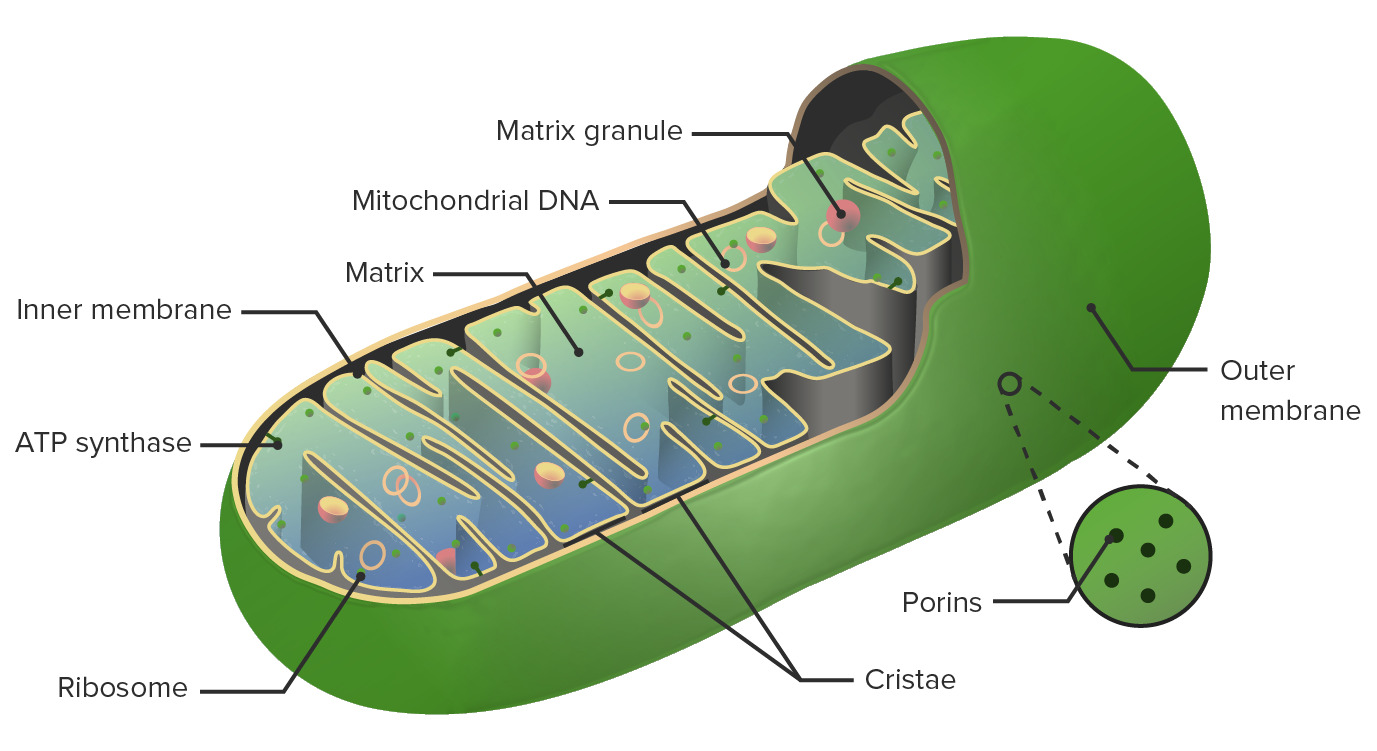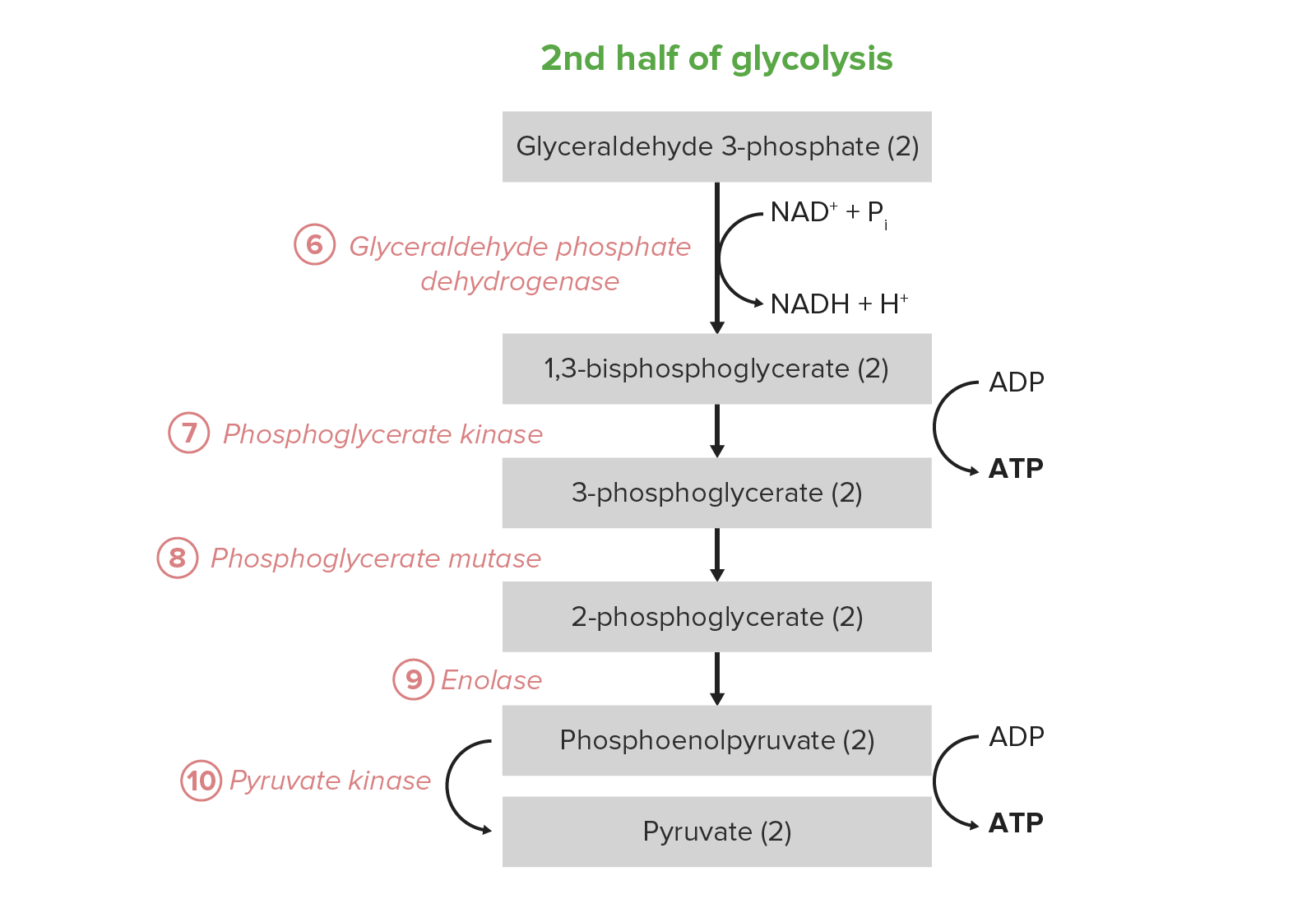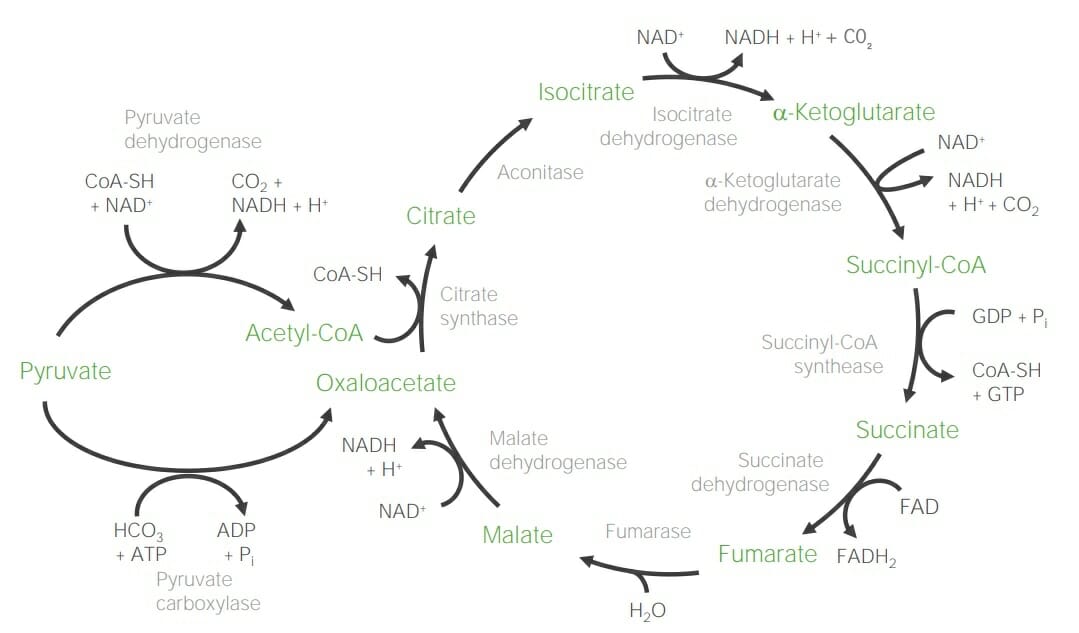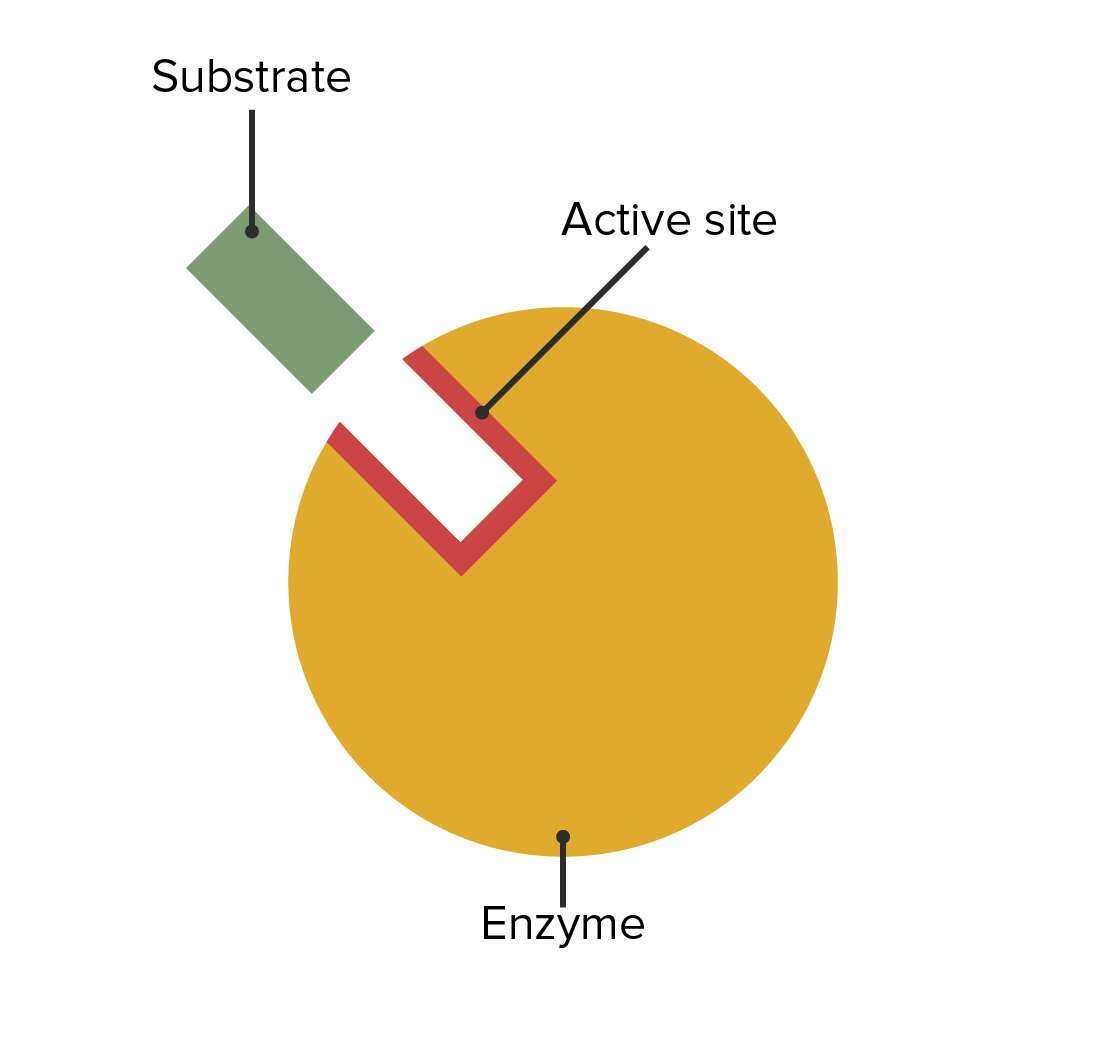Amazing lecture
By Peddi A. on 25. October 2023 for ATP Synthase
The video by Lecturio provides an excellent overview of the electron transport chain and chemiosmosis, two of the most important metabolic processes in the cell. These processes work together to produce ATP, the cell's energy currency.
One of the most interesting things about the electron transport chain is that it is a highly efficient way to convert energy from food into ATP. The chain uses the energy from NADH and FADH2, two electron carriers that are produced during glycolysis and the Krebs cycle, to pump protons across the inner mitochondrial membrane. This creates a proton gradient, which is like a dam holding back a reservoir of energy.
The ATP synthase enzyme then uses the energy of the proton gradient to drive the synthesis of ATP from ADP and inorganic phosphate. This process is called chemiosmosis.
The video does a great job of explaining the complex steps of the electron transport chain and chemiosmosis in a clear and concise way. It also provides helpful animations and diagrams that illustrate the process.
Amazing study companion
By Natalie T. on 03. August 2022 for Energy, Enzymes and Metabolism
Breaks concepts down easily and love the review questions. Helps solidify learning.
awesome teacher
By asha bashir n. on 03. July 2022 for Entry Points into Cellular Respiration
very new insight to explain macronutrient and fruit for thought
Super well understandable
By Carzmo P. on 28. April 2021 for Process of Metabolism
I love her course. She explains in a very understandable way.
Great Teacher
By Madhuja B. on 04. April 2021 for Process of Metabolism
I am no longer scared of metabolic pathways. thank you so much.
aadp oas poas dpoaos jdpoas dopas jdpoas dpo sjdopas dj
By zdkmsdlf l. on 14. November 2020 for Krebs Cycle
adioasd oiaj doias ds dioas jdoias jdoas djoi asdjoia sd o
Summarized
By Diana Laura D. on 23. June 2020 for Krebs Cycle
It is a good explanation for a complex topic, with only the most important
Fantastic
By Oluwatomiloba O. on 02. June 2020 for Cell Respiration
Dr. Cornwall did a very great job with this.. The big picture simplified everything and made studying into little details easy.
mejorar la traducción al español.
By Paola Andrea R. on 02. June 2020 for Energy, Enzymes and Metabolism
el contenido esta muy bueno, solo que la traducción tiene falencias y dificulta entender los conceptos adecuadamente.
.
By Santiago P. on 17. March 2020 for Process of Metabolism
Great lecture! Very simplified and friendly explained. Thanks so much !
Entropy
By Chad-Solomon D. on 18. January 2020 for Laws of Thermodynamics
I believe the term is entropy is misused in this lecture.
Awesome lectures
By Daysi B. on 07. January 2020 for ATP Synthase
Awesome analogy great lecture! Very nice lectures overall I really enjoyed them. even though I have taught this topics and I know them fairly well. I enjoy little gems of information I received through these lectures, and new understanding
Now I understand it
By Wendy D. on 17. December 2019 for Definition of Energy
I like how Dr. Cornwall recaps chemistry and relation to energy to cells. Her hand motions help with my learning and understanding. Thank you.
Nice comparisons make it easier to learn and understand
By Tereza P. on 05. December 2019 for Chemical, Endergonic and Exergonic Reactions
I like the practical comparisons used for better understanding and remembering the topic, makes it much easier and more entertaining!
Great!
By Rafael O. on 25. February 2019 for Energy, Enzymes and Metabolism
Amazing lectures. Simplifies complex pathways and process. Really fantastic! Watched every lessons.
Not for me
By Natasha O. on 25. September 2018 for Electrochemical Gradient
As much as your stories are interesting for the ETC gradient It does not fit my learning style. It would be nice to have clear scientific language about what's happening. I can't write a story on my exam paper.
Perhaps this is just me.
Excellent explanation
By Maria A. on 22. September 2018 for ATP Synthase
Easy to understand and very complete. Thank you for your time, helped me a lot
Great!
By B?o B. on 30. June 2018 for Process of Metabolism
You make it much more easier. However, I still understand all important points. Thank you!
Enjoyable!
By Andrey K. on 31. May 2018 for Electrochemical Gradient
Really great explanations of the whole process. Was not happy that I had to relearn Krebs and ETC but actually found these videos enjoyable and valuable.
Analogy rocks!
By Andrey K. on 31. May 2018 for Activation Energy of Reactions
Great enzyme analogy! Enzyme is the friend who puts his two other friends in contact with each other so that they can start talking and dating ;)
Very Useful Lectures
By Steven F. on 12. April 2018 for Energy, Enzymes and Metabolism
Loved the lectures, especially the lecture on the electron transport chain. Dr. Cornwall had a really useful analogy of the ETC and kids (electrons and hydrogens) going to the prom (ETC) that really made the concept stick. Very good job!
Kevin
By Kevin R. on 08. April 2018 for Energy, Enzymes and Metabolism
It's an excellente teacher! She uses easy analogies that you can memorize quickly and gives you a summary of your class (in my case).
Greetings from México!
Face With Tears of Joy! Thank you very much!!
By Jerry J. on 21. March 2018 for Electrochemical Gradient
Gooood job LoL and really a good story-maker????Thank you very much! Amazing, very impressive!
The Very Best So Far!!!!
By Angela N. on 20. March 2018 for Process of Metabolism
I do not think there can be any simpler explanation of these concepts. Dr. Cornwall takes her time to explain these concepts in a way that they stick with you, and the analogies she uses engrave them into the medulla so that you can relate to the concept. You can't beat this! This is exceptional!!!! Thank you so much!!
Biochemistry with a smile
By Mark A. on 25. February 2018 for Energy, Enzymes and Metabolism
This lecture was excellent in every way, I must say DR. Cornwall is a Pro in intermediate metabolism. I couldn't understand this processes better in medical school than she has made me.
Clear and Concise
By William J. on 22. November 2017 for Pyruvate Oxidation
I don't waste my time going to any biochemistry lectures at my medical school because I know that Dr Cornwall explains all of the content more clearly, in more depth, in less time. I always finish her lectures excited for the next one!
EXCELLENT
By Carissa J. on 22. November 2017 for Energy, Enzymes and Metabolism
Brilliant! I have always found these topics extremely confusing at medical school, but Dr Cornwall is able to explain them in such a way that they seem straight forward and easy.
This certainly replaces lectures for me! If anybody is unsure about trying this course, they should definitely try it! Dr Cornwall is the best biochemistry lecturer I have seen!
Excellent
By Lara G. on 05. November 2017 for Pyruvate Oxidation
A great lecture. I am a high school student and i struggle with biology. I get a better explanation from your lectures and I am not even a native English speaker. Thank you so much!
Exceptional lecturer.
By Anthony F. on 13. July 2017 for Process of Metabolism
What I loved the most about this lecture was how Dr. Cornwall actually took her time to explain the concepts discussed, and even used simple analogies to ensure that the information was easier to digest. This is something you find lacking in many professional lectures. Thanks again Dr. Cornwall!
Good
By Laura P. on 12. June 2017 for Energy, Enzymes and Metabolism
Thank you dr. Georgina Cornwall!
Everything was perfectly understood with your lecture!
Great Help.
By Timothy H. on 18. February 2017 for Energy, Enzymes and Metabolism
She is very detailed but yet not overwhelming with the lecture. It's been great help on my bio knowledge.
Great =)
By Gonzalo A. on 16. February 2017 for Energy, Enzymes and Metabolism
Not very hard to understand, sometimes a bit too "shallow". However most often very good. Even great.
In General very good well fone
By Teshome S. on 05. January 2017 for Energy, Enzymes and Metabolism
The Dr Georgina did it very well she know detail about the subject matter andinet did not express about her and execelentroll model for me!


